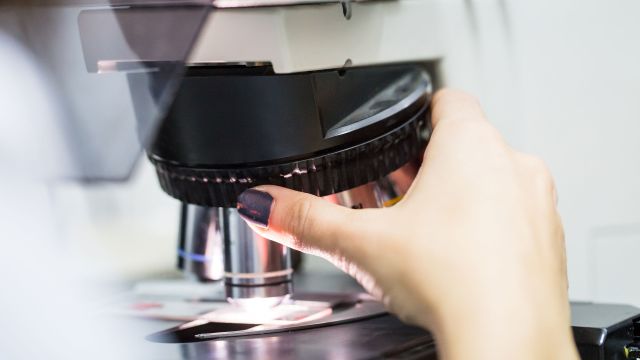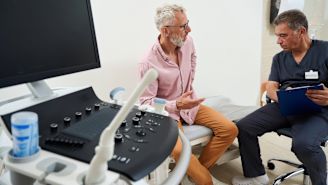Updated on October 17, 2024.
Soft tissue sarcoma, sometimes abbreviated as STS, is cancer that forms in the soft tissues of the body, such as the muscles, tendons, fat, nerves, connective tissues, and blood vessels.
Because there are many different subtypes of soft tissue sarcoma, diagnosing the specific type can be a challenge for healthcare providers. Diagnosis typically involves a biopsy, where a tissue sample is taken from a tumor or tumors and tested in a lab. Imaging tests also frequently play a role in diagnosis.
Undifferentiated/unclassified soft tissue sarcomas are common. Even with a biopsy, a healthcare team may not be able to fully identify what type of soft tissue sarcoma a person has— healthcare providers know that the cancer is a form of sarcoma, but they may not be able to pinpoint the exact subtype.
Soft tissue sarcomas are relatively rare, but some subtypes are more common than others, and certain types are more common in certain areas of the body. Some of the more common subtypes are:
- Undifferentiated pleomorphic sarcoma (UPS). UPS most often starts in the soft tissues of the legs, arms, or the abdomen. This type of sarcoma can grow quickly and spread to other areas of the body, including the lungs.
- Liposarcoma. A type of sarcoma that begins in adipose tissue (fat tissue). This is the most common form of soft tissue sarcoma in adults.
- Leiomyosarcoma. A type of sarcoma that begins in smooth muscle tissue or the precursor cells that become smooth muscle tissue. It’s worth mentioning that leiomyosarcomas are different than leiomyomas, which are benign uterine fibroids—uterine fibroids are not a precursor to leiomyosarcomas.
- Gastrointestinal stromal tumor (GIST). A type of sarcoma that begins in the gastrointestinal tract. The stomach is the most common location.
- Synovial sarcoma. A type of sarcoma that begins in or around the joints. These most often occur in the hip, knee, ankle, or shoulder joints, though they can occur in any location in the body.
- Myxofibrosarcoma. A type of sarcoma that begins in the connective tissues that separate muscles from other muscles, and muscles from skin.
As with other forms of cancer, treatment for soft tissue sarcoma depends on a number of factors about both the cancer and the person being treated. These factors include—but are not limited to—the type of soft tissue sarcoma, the stage of the cancer, the size and locations of the tumors, the grade of the tumors, the overall health of the person being treated, and the medical history of the person being treated.
Surgery to remove the tumor or tumors is the most common form of treatment. Radiation therapy and chemotherapy are also commonly used. Targeted therapy drugs and immunotherapy drugs may also be options for some types of soft tissue sarcomas.







